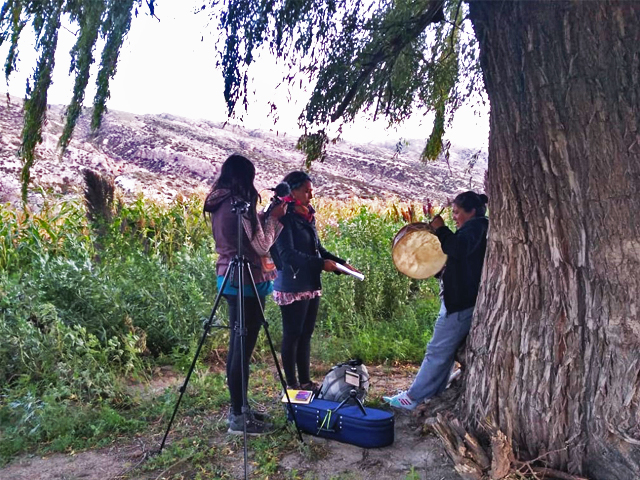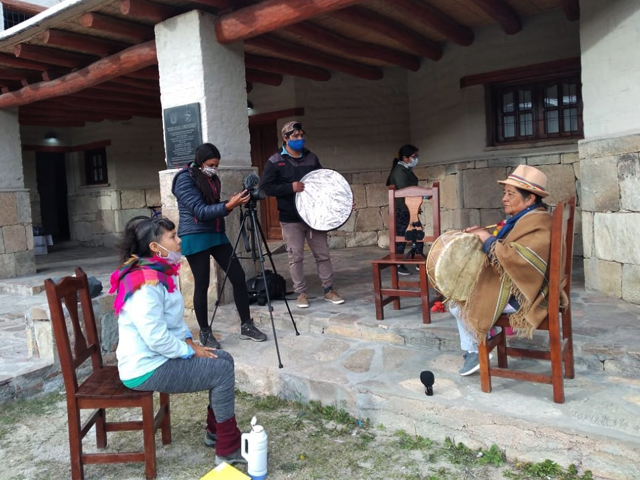This community Project initiated by the Rural Community Museum stems from the requests of the indigenous and rural communities in the area, who were concerned about the loss of ancestral forms of music and song, largely due to processes of indigenous stigmatisation and invisibilisation. Music-making and singing are a key component of inhabiting the landscape, an intangible but socially effective approach to experiential map-making that is transmitted and shared across generations. Local communities today recognise the need to reactivate their memory and wish to put in circulation their music and songs to turn singing them once again into a quotidian practice.
After conversations and dialogue with song makers, musicians, and community representatives the initial focus was placed in the positive valuation, memory activation and recording of two key mountain musical genres: ‘copla’ and ‘vidala’, which have been rapidly decreasing in popularity among youngsters. The community radio is a key component of the strategy, as well as internet Resources, to produce, preserve and reproduce musical knowledge and Education. With the collaboration of the local music teacher, this strand of work connects the Museum with the local schools, as well as with the ‘Moving Museum’ parallel project.
Under the umbrella of the Living landscapes project, this area of work focuses on audio visual recording songs and memories of local inhabitants, connecting these activities with those organised by the local FM radio and the schools. The activities include the transcription of songs into sheet music and compiling a booklet with music from the different communities to extend educational opportunities while the pandemic lasts as well as in its aftermath. This strand of work is led by a team of musician researchers and ethnomusicologists (Soema Montenegro, Rosario Haddad y Aldana Bello) and the local school music teacher (Bruno Villagra), together with local cultural managers and the anthropology section of the CIIVAC team.


